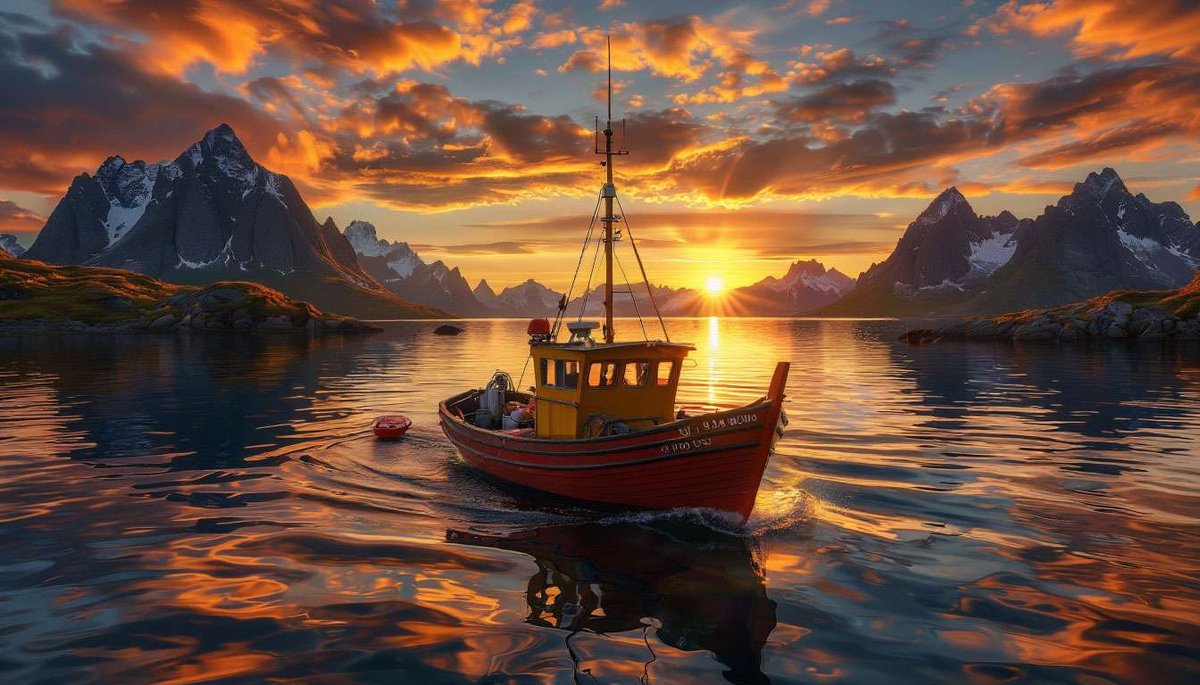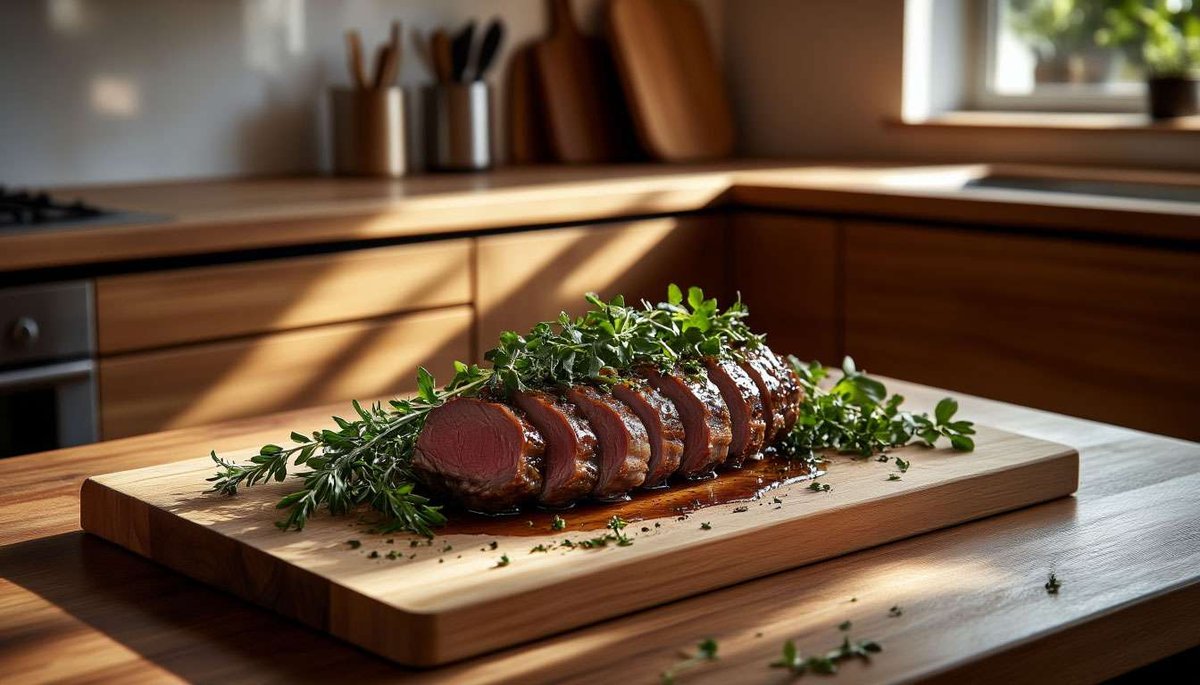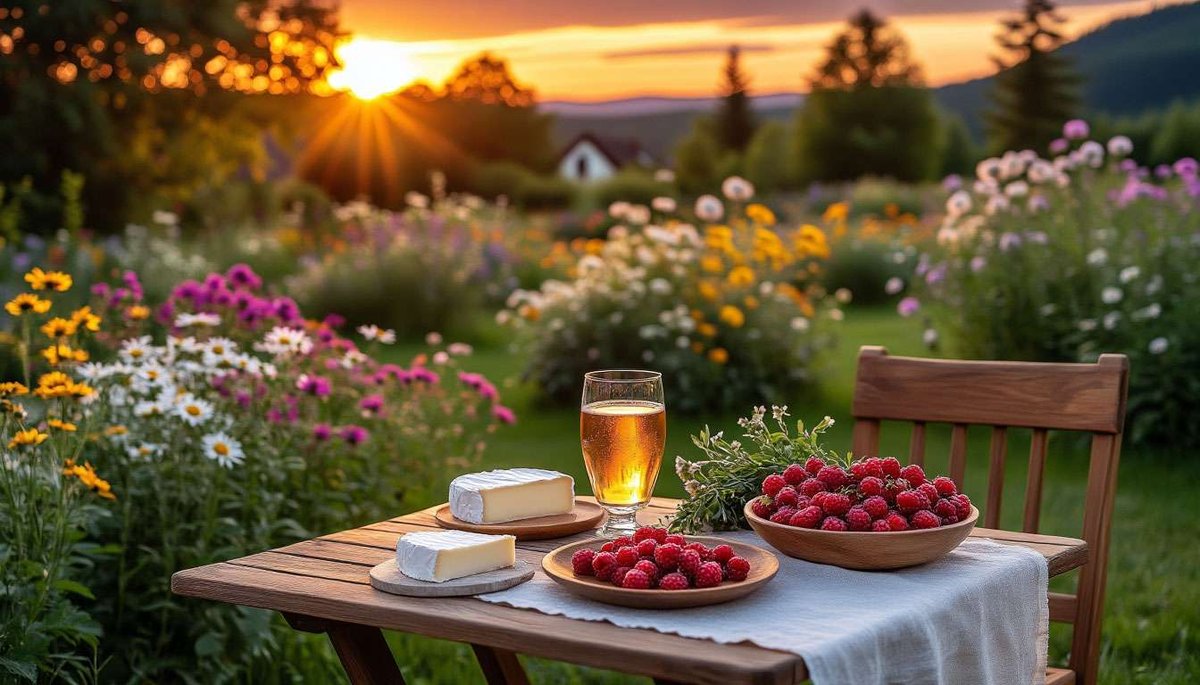Norwegian spring cuisine: skrei, young lamb and the taste of the midnight sun

After a long winter, Norway comes to life: masts ring out in coastal villages, mountain slopes turn green, and the polar day makes you forget about night. Spring here is short but full of exciting culinary events: in the north, the legendary cod season comes to an end, the first lambs are born in the valleys, and chefs gather young wild herbs. Let's find out which foods reign supreme under the midnight sun and where to find them.
Why does the skrei season last only four months and where can you try the "winter gold"?
Skrei is Atlantic cod that migrates from the Barents Sea to the Lofoten coast from January to April to spawn. The cold ocean currents make the meat dense, snow-white and rich in protein. From mid-March, the catch is distributed among northern ports, and in April the fish is available in all major cities. The best dishes featuring skrei can be found in the restaurants of Svolvær and Henningsvær, where chefs serve it baked with seaweed petals or in a delicate soup with dill oil.
How is spring lamb meat different, and what dishes should you order?
Young lamb (vår-lam) grazes on low-lying meadows immediately after the snow melts and has time to develop a mild, almost creamy flavour before the alpine season begins in earnest. The meat is finely grained, moderately fatty and has a light aroma of wild herbs. In April and May, the menu features slow-cooked shoulder with heather honey, rack of lamb with celery root purée and ragout with wild caraway. Try it on the set menu at Oslo restaurants or at farm dinners in the Gudbrandsdalen valley.

What wild herbs do Norwegians gather in spring and how do they use them?
As soon as the snow melts, chefs head out to gather the first shoots: wild garlic, wood sorrel, young pine cones and spruce buds. Wild garlic is marinated in apple cider vinegar and added to oil and spreads, while wood sorrel is used to garnish salads, giving them a bright acidity. Pine and fir buds are used in syrups, ice cream and even aquavits with a coniferous aftertaste. These plants make an enormous contribution to New Nordic cuisine: they provide freshness, vitamin C and a taste of the taiga that cannot be replicated outside the North.
How does the midnight sun affect spring fishing and food festivals?
In Arctic regions, the sun hardly sets from the end of April: fishermen go out to sea around the clock, and festivals move to the quays. In Tromsø, at Smak Nordnorge, tourists sample street food made from fresh skrei, northern shrimp and scallops while watching the night markets. The continuous light accelerates the photosynthesis of wild herbs, making their aroma more intense. Travellers enjoy a unique experience: lunch under the midnight sun, which lasts until breakfast the next day.
Where are the iconic spring gastronomic events and what can you taste there?
In May, Bodø hosts the Bodø Seafood Festival with tastings of dried cod and crab burgers. In the south, in Hardanger, Blomstring begins — a celebration of apple blossoms and cider: farms open their picnic seasons, where cider is paired with goat cheese. In Trøndelag, the Stokkøy Brygge Food Camp kicks off: guests learn how to smoke salmon on juniper branches and make a creamy seaweed sauce. Tickets should be booked in advance: many workshops are for groups of no more than ten people.
What dishes are served at Easter and how do they reflect the change of season?
Easter (Påske) in Norway marks the transition from winter to spring. Traditionally, roast lamb with rosemary and garlic is prepared, symbolising renewal, and fresh cod with mustard sauce. Dessert is often sweet cardamom buns or lemon cake, reminiscent of sunny days. Outside the city, families have picnics: they roast pølse sausages on the snow and bake waffles on portable iron plates. This is the first outdoor feast of the year, combining winter snowy landscapes with the scents of the approaching summer.

Spring in Norway is a short but incredibly intense moment when winter reserves meet the first gifts of the thawing earth. Skrei brings the power of the northern seas, young lambs bring the tenderness of the mountain plains, and wild herbs bring the taste of reborn nature. Add to this the endless daylight that turns every meal into a never-ending celebration, and you'll understand why a spring food tour of Norway can outshine even the famous summer cruises through the fjords. Plan for April–May: catch the skua, reserve tables at cider picnics, and try bread with pine oil under a sky that never fades. Here, spring smells of salt, resin, and freedom.





2 comments
Log in to leave a comment